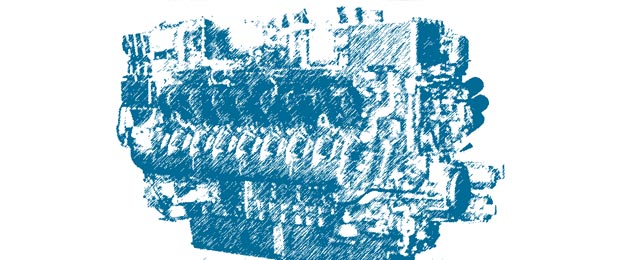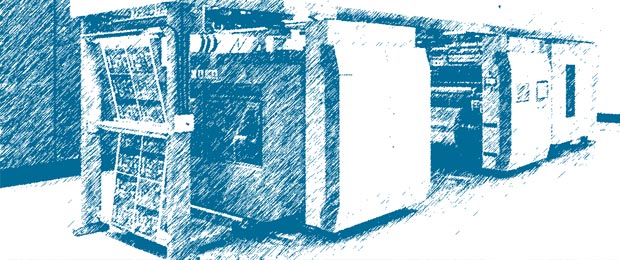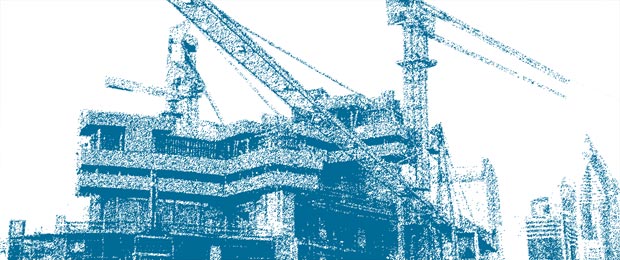Turnaround of an Engine Development Program

Client: Global top 3 Engine Manufacturer
Goal: Scheduled Program Implementation after Backlog
Solution Methods:
Analysis of Figures: 20% | Program/Project Management: 80%
Initial Situation:
The development program for hybrid systems of a leading global manufacturer of large engines had come to a standstill due to personnel bottlenecks and a lack of controlling in the projects as well as in the entire program. Due to time constraints imposed by the customer, the program plan was largely inflexible.
Solution:
After a detailed analysis by reviewing the data stock and the conditions on site, an assignment as program manager followed. A systematic and at the same time agile project controlling including requirements management and integration of key suppliers was set up. Subsequently, the completion of the work packages and the achievement of set milestones were ensured.
Results:
Project backlogs were made up and the entire program was brought back into the time and budget plan. Decision making was shortened, a dynamic framework of objectives and gates/intermediate results was implemented and the entire workflow was made more agile.
Training and Introduction of Problem Solving Techniques

Client: Global top 2 Manufacturer of Filters
Goal: Reduction of Scrap/Qualification and Agilization of Personnel
Solution Methods:
Workshops: 50% | Coaching: 50%
Initial Situation:
A leading global manufacturer of filters for the automotive industry and other industries produces too much scrap in some plants.
Solution:
After a detailed analysis by reviewing the data stock and lived conditions on site (Gemba Walk), a special training program of problem solving techniques was developed and held. During the implementation phase, we accompanied and coached the managers and specialists involved.
Results:
The scrap and number of rejects was significantly reduced while the skill level of the involved personnel in the plants was raised. The managers and specialists act much more agile and on their own responsibility.
Optimization of Operations / Agilization of Executives and Team Leaders

Client: Global top 5 Packaging Press Manufacturer
Goal: Optimization of Operations with Sustainable Anchoring in Practice
Solution Methods:
Analysis of Figures: 10% | Interim Management: 70% | Coaching: 20%
Initial Situation:
A world-leading manufacturer of packaging printing presses wanted to make the operations of a plant more cost-efficient, from near-series development to production and shipping. In addition, the transparency of the status quo in the processes, customer specifications and relevant key figures for all managers and specialists involved was to be increased.
Solution:
After a detailed analysis by reviewing the data stock and lived conditions on site, an assignment as interim manager with integrated process optimization followed. At the same time, managers and specialists were iteratively coached and enabled to act more agile. In parallel we introduced an agile goal management with milestones to increase transparency in operations, shorten lead times and reduce working capital.
Results:
Considerable cost advantages were achieved and the personal responsibility of the key personnel up to a higher level of agility was achieved.
Value Chain Optimization 'Procurement to Project Execution'

Client: Global top 3 Construction Supplier
Goal: Value chain optimization with optimized integration of engineering in procurement, logistics and customer project management/sales
Solution Methods:
Process Design: 70% | Training: 20% | Digital Learning: 10%
Initial Situation:
A leading global construction supplier and logistics provider wanted to optimize the effectiveness and efficiency of an important national subsidiary on the Arabian Peninsula, as the company made a significant contribution to the overall group result. Due to territorial and political circumstances, the regional company can only make limited use of local procurement markets and must maintain highly efficient procurement logistics. At the same time, sales performance is to be increased, which in most cases involves lengthy and complicated acquisition projects with a very high proportion of engineering work.
Solution:
By mapping and visualizing the core processes in workshops with the management and selected executives, project managers and experts, we clarified the value chain with all its process cells. Together we found potential savings very quickly and subsequently the client implemented them under our supervision. In a separate program, we identified high potentials with the engineering tea and qualified them for sales and customer-centric project management. Results were ensured through an innovative objectives management system consisting of milestones and interim results that could be individually tracked by each manager as well as each expert.
Results:
In the target organization, engineering resources along the value chain were systematically integrated into the functions of procurement, logistics, project management and sales. In this way, the value chain could be shortened and its efficiency increased at many points. The engineers selected for the sales-related assignments acted very soon sovereign. In the second year of our measures, the national company achieved its best result to date.
Customer-centric Process Communication / Kanban Principles

Client: Global Top 10 Auto Supplier (Tier 1)
Goal: Optimized communication in program with key OEM through optimized communication
Solution Methods:
Digital Learning: 60% | Training: 30% | Process Design: 10%
Initial Situation:
A management review performed by us before had derived that meeting organization within an international building group program showed enormous potential for efficiency improvement. Executives as respective meeting managers are supposed to rapidly implement newly developed organization form based on the on-demand principle. Due to the fact that the program was already advanced and the production start (SOP) was less than 12 months away, qualifying executives must quickly occur.
Solution:
We chose a multi-media approach. As online helpdesk in the client’s intranet we published several SPOCs to enable quick instruction and reference. Seamless card sets with the same content were also produced from the system and distributed to executives. The new meeting concept had already been introduced to and jointly refined by the executives in a workshop, which meant that all protagonists were actively involved.
Results:
As requested by the client, we were able to forego complex personal instruction and training methods. The success was our client’s dramatically improved project management and our justification: Overall, the program team gained considerably more time (up to 5% more value-added work time for specialists involved), worked more closely together and additionally, email traffic to be coordinated decreased by ~60%. In combination with the previous module on process modification overall savings exceeded 1 million Euros.
Accelerated Decisions on Innovations and Products

Client: Mid-sized international market leader of cooling technology
Goal: Change of leadership culture in technical department to accelerate decisions on innovations and products
Solution Methods:
Digital Learning: 15% | Training: 75% | Process Design: 10%
Initial Situation:
Our management analysis conveyed rigid structures in the company’s technical division. A culture change to stronger independent organization with clear management communication is urgently required, so that the company can achieve its future strategic targets. The company had been shaped for decades by its founder. After his death, important decisions-making routes were left entirely tailored for top management which made independent executive action highly difficult.
Solution:
The project concept was aligned with the newly introduced corporate mission statement in addition to a values codex, conveying the new behavioral requirements to the executives at cognitive level. This phase was followed by classic presence training, during which executives can practice employee evaluations in various situations. The final phase for consolidating and ensuring sustainability involved observation and evaluation of executives during a calibration period while they practiced employee evaluation. Based on the performance observed, the executives were given final, individual instructions. To accelerate the change we put a suite of customized SPOCs online for each executive.
Results:
The executives felt increasingly secure in their new role and acted with more self-confidence. In the long run, decisions on innovations and products were made 2 to 4 weeks earlier than before and were based on clear criteria.
Capability Building for Team Leaders in Technical Service Unit

Client: Global top-5 notebook manufacturer
Goal: Increase process efficiency in service unit through qualifying executives
Solution Methods:
Training: 70% | Coaching: 20% | Process Management: 10%
Initial situation:
The client's executive management development was long oriented to the needs of individual executives, who attended external training courses for selected disciplines and subjects. Due to lean administrative structures, the German organization had no systematic personnel development. As a result, executive managers had differing knowledge and competence levels and there was no clear understanding of correct leadership behavior.
Solution:
Collaborating closely with the client's HR team we created a basic curriculum, which comprised all required fundamentals for successful leadership. The guiding principles here were mainly the client's strategic need and cultural self-image. Each fundamental from this curriculum was assigned an appropriate procedure and behavior, so that this scheme could be concretely implemented in practice.
As the capability building program was supposed to include a large practice component and the time frame was very short time frame, so the learning curriculum was implemented in two training days. One day was more focused on relaying knowledge and the exchange between the participants. The second day had a large practice component through role playing.
A specific focus was the inclusion of concrete case studies and every day challenges from participants. This allowed both practicing mastering typical situations and finding concrete solutions in many cases. The training thus had a high consulting component for the entire company.
In addition we prepared the selected leadership fundamentals as SPOCs (‘small private online courses’) and made them available to the class online.
Results:
Most team leaders were able to expand their competencies and skills and practice in a realistic atmosphere. The Service Unit became more powerful and processed a higher number of orders with the same headcount at the same or even higher quality standards.
Change Management Coaching of Project Leader in Large Scale Project

Client: Big Champion Electronic Component Distribution
Goal: Efficient implementation of a major project
Solution Methods:
Coaching: 80% | Capability Building: 10% | Process Design: 10%
Initial situation:
The client has operated a logistics center in Germany for many years. The center consolidates storage and distribution functions for Germany and selected European countries. After previous facilities became too small, there was a decision made to build a new warehouse with significantly more capacity and the most modern technology. The property also has spaced which can be expanded with an extension at a reasonable price. After the scheduled start phase, it became apparent that the project plan might not be adhered to with available resources. Due to coordination problems with the software provider and diverging interests on behalf of the stakeholders threatened to severely delay the project.
Solution:
We worked jointly with the Project Leader on a regular basis and with the Country Manager on special occasions within a 12-months coaching mission.
Results:
A joint effort resulted in lost ground being significantly regained. Several critical conflict hurdles were diffused and even fully resolved at times. In addition to the markedly more rapid execution of some central tasks, the collaboration had a very positive effect on the motivation of important participants and also the Project Leader.
New Leadership Process in Technical Department

Client: Mid-sized European Market Leader in Special Machinery Production
Goal: More effective Leadership Structure in Technical Department
Solution Methods:
Process Management: 80% | Coaching: 20%
Initial Situation:
A machinery production company, European market leader in a specific technological environment, would like to act more quickly in its technical area in the future. Executives should have more decision-making freedom and receive more responsibility and subsequently become more active.
Solution:
All executives in the technical area were interviewed and simultaneously encouraged to contribute their own recommendations. This enabled us to quickly discover the core of the problem: The executives were willing to take on their new role but the necessary tools were missing. These were stipulated organizational structures and in the end leadership practice as well. In close collaboration with the Top Management and the department executives we designed a new leadership structure based on clear responsibilities, a personnel development plan and an operative focus on the needs of the – mainly internal – customers.
Result:
New and highly effective leadership process with clear roles and reporting lines was created, plus maximum transparency and customer orientation achieved.
Increase in Program Steering Efficiency

Client: Global Top 10 Auto Supplier (tier 1)
Goal: Increase Value Added in Interpersonal Processes
Solution Methods:
Process Management: 90% | Coaching: 10%
Initial Situation:
The program team of a specific construction group for an important major client (OEM) was supposed to work more efficiently and effectively together. The company is of one of the 10 largest automobile suppliers in the world and is considered top level supplier for many programs. Caused by deployments of team members to several other programs simultaneously, the program suffered increasing conflicts of objects and time.
Solution:
A need-specific interpretation of program meetings was specified, thus similar to the Kanban principle. In the future only those employees would be invited who need the new information and those who have to report on the progress of a project. Information and assignments which affected all participants would first be executed. For more specific points, only those employees affected by the meeting content need to be present. If there was no new status, the meeting would be completely cancelled. Executives received special instruction on how to permanently pass on the new meeting regulation to their teams, even at different locations and clarify specific problems directly with the team. This would also shorten status meetings.
Result:
Accumulated savings in excess of 1 million EUR.
Change Management Plan for Data Center

Client: Data Center Service Provider at Major Airport
Goal: Increase Interpersonal Process and Management Performance
Solution Methods:
Process Management: 90% | Coaching: 10%
Initial Situation:
The specialist division Data Center Services in the computer center at a major international airport is supposed to work more effectively and efficiently in the future. The computer center does not want to only offer its services as an internal service provider. It also wants to offer them externally on the IT service provider market. The Data Center is active in a non-unified environment as it is operated as a joint venture. Besides, there are de facto unspecific or ignored responsibilities between the individual companies and interfaces.
Solution:
Mainly using expert interviews, we analyzed the organization of the specialist division, significant processes and executive competence. Based on the first results, the most important inefficiencies and 'web errors' in the organization were discussed and refined with the division head and top management team. It was stipulated that on-demand processes based on the classic lean system and offering the most potential efficiency, should be handled separately. Individual development plans were prepared for executives. A milestone plan for implementation including task allocation, resource planning and timeframe was drafted and adopted jointly according to plan with the division head.
Result:
A structured milestone plan for the change process – which the client wanted to execute with own resources was created and validated. The change process started with maximum momentum.